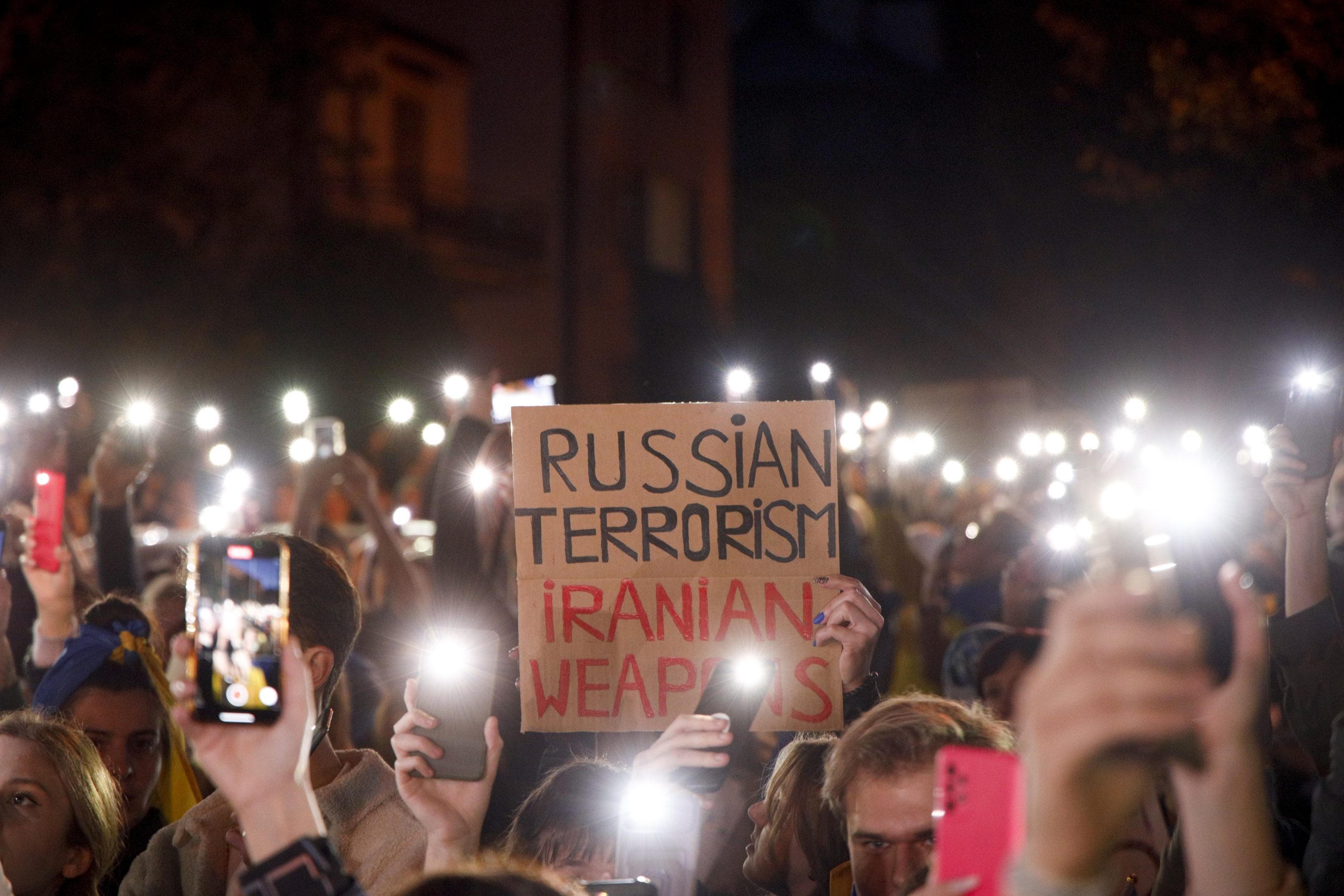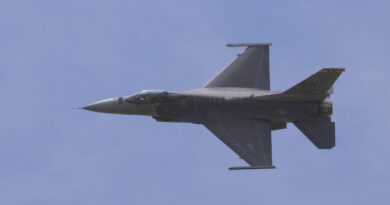Ex-empires Iran and Russia forge new bonds as both blame their woes on the West

October 17, 2022
Ex-empires Iran and Russia forge new bonds as both blame their woes on the West
From a societal level, Russia and Iran would seem to have little in common. To put it simply, Russia is a secular ex-Communist state whose citizens dress as they please and are fond of vodka; Iran is an Islamic theocracy that forces women—at pain of beating or worse—to cover their hair and bodies and outlaws alcohol.
Yet both are former empires that nurture massive grievances against the West. Both are prone to paranoia and conspiracy theories that involve outsiders coveting their territory and supporting ethnic insurgents along their peripheries to erode and even dismantle their states. The West, Russian and Iranian rulers jointly believe, want to overthrow their regimes, and don’t care if the alternative is chaos.
These conspiracy theories are, of course, useful justifications to prop up autocratic rule and justify brutality against the Russian and Iranian people and their neighbors. Thus, Russia has tried to defend its aggression against Ukraine since February by claiming that the US and Europe see that former Soviet republic as a sort of aircraft carrier—a potential future member of NATO whose weapons can be pointed at Moscow.
Meanwhile, Iranian leaders, still chanting “Death to America” forty-three years after the Islamic revolution deposed the pro-American Shah Mohammad Reza Pahlavi, insist that the US opposes the clerical establishment because it cannot bear to see an “independent” Iran that doesn’t bend to Washington’s will and challenges US clients, such as Israel, in the Middle East (this assertion contradicts Iran’s growing dependence on Russia and China, which some in Iran have likened to a second Treaty of Turkmenchay).
Recent protests in Iran, led by women throughout the country protesting enforced veiling and other deprivations of freedom by the Islamic Republic, have been met with the harshest repression along Iran’s periphery, such as in the west in Kurdistan province—home of Mahsa Jina Amini, the twenty-two-year-old woman who died September 16 in the custody of the so-called morality police—and in the southeastern province of Sistan and Baluchistan province, where more than eighty-two people were reportedly killed by security forces on September 30. Both regions are majority Sunni Muslim in addition to being ethnically non-Persian and have historically suffered discrimination from the ruling Persian majority.
Casting blame on the West
Iran’s Supreme Leader, Ayatollah Ali Khamenei, has blamed the United States and Israel for stoking the protests rather than his own regime’s brutality and denial of basic freedoms. Meanwhile, Russia’s ruler, Vladimir Putin, pines for the old Soviet Union and seeks to recreate a “Russian world” that reincorporates Ukraine and other areas that became independent in 1991.
Putin and his supporters suggest that the West is not satisfied just with hiving off Ukraine, the Baltic states, and Central Asia three decades ago when the Soviet Union dissolved. Indeed, if Putin is perceived as losing the war he launched in Ukraine last February, peripheral parts still in Russia, such as majority Muslim Chechnya, might also seek greater autonomy, if not outright independence, defenders of the Ukraine war privately assert. Some Russians spoke to me privately of a return to smuta, or a “time of troubles,” following the fall of an autocratic ruler, such as the civil war that tore the country apart after the 1917 Bolshevik revolution. If Putin goes, this line of thinking says, Russia will also go down the drain.
Anarchy and civil war are also real concerns for Iranians, even those who desperately seek the fall of the Islamic regime. The rulers in Tehran benefit from this fear and uncertainty about what would follow them if their theocratic kleptocracy is toppled. For years, the examples of Syria and Iraq, with their bloody sectarian fighting—in part, stoked by Iran—have been used as bogeymen to keep Iranians’ desire for regime change in check. The Iranian opposition’s lack of leadership, including in the much-divided diaspora, feeds the government’s propaganda that the status quo, however awful, is better than a bloody unknown.
(On October 13, President Ebrahim Raisi told a summit in Kazakhstan, also attended by Putin, that “Following the failure of America in militarization and sanctions, Washington and its allies have resorted to the failed policy of destabilization.” Iran also failed to cast a vote at the United Nations General Assembly, which voted overwhelmingly on October 12 to condemn the Russian invasion of Ukraine.)
Limited cooperation
Perhaps it is not so strange that the governments of Russia and Iran are now arguably closer than they have been in centuries. The clerics and their Islamic Revolutionary Guard Corps have seemingly forgiven Russia for seizing prime chunks of the old Persian Empire in the 18th and 19th centuries and, instead, see a lucrative market for Iranian drones and other manufactured goods. Russia has also come to appreciate Iran’s skill at circumventing Western sanctions and finding markets for discounted oil, even if the two are competing for the same Chinese market.
Yet, in practical terms, Russia-Iran cooperation is still not terribly robust. Apart from the Iranian-made combat drones that Russia is using to calamitous effect in Ukraine, trade between the two countries is still minimal—only worth about $4 billion in 2021. Iran has gotten guaranteed supplies of Russian wheat in return for its failure to condemn Putin’s aggression against Ukraine, but most Iranians still hold Russia in low regard. If the ruling clerics are looking north and east, Iranians still look west, where most members of the Iranian diaspora live. The disdain young Iranians demonstrate every day for their decrepit rulers is palpable and the fear of what might follow the Islamic Republic seems to be diminishing.
In Russia, meanwhile, young men—especially those with technocratic skills—have been voting against Putin with their feet, fleeing a new mobilization for the “special military operation” in Ukraine. In places like Turkey and Georgia, they are likely to encounter Iranians who have also fled autocracy and sought greater personal freedom. In exile rather than statecraft, Russians and Iranians may find more in common than a mutual taste for the strong, sweet black tea that both call “chai.”
Barbara Slavin is the Director of the Future of Iran Initiative at the Atlantic Council. Follow her on Twitter: @BarbaraSlavin1.
Further reading
Image: Protesters hold up their phones with flashlights lit during a protest in Warsaw, Poland on 17 October, 2022. Several hundred people gathered in front of the Iranian embassy to protest the supply of loitering Shahed drones to Russia. Russia is using the Iranian manufactured drones to attack Ukraine. Several dozen people have already died and critical infrastructure damaged in major cities after use of the Shahed drones by Russia. (Photo by Jaap Arriens / Sipa USA) (Photo by STR/NurPhoto)
This article has been archived for your research. The original version from Atlantic Council can be found here.


